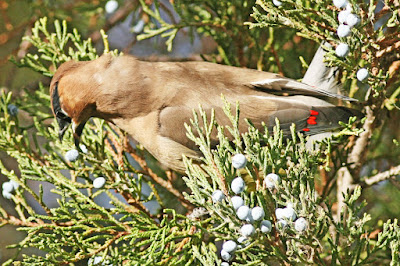Hungry Hermit Thrush pics

During the 20-30 minutes I watched and photographed this Hermit Thrush, I watched it consume a seed (not sure what plant those seeds were from but several more are visible in the pic) shown in upper pic and several juniper berries. Interestingly, they are well known as insect feeders that eat more berries in winter but often seeds are not mentioned (other than berry/fruit seeds). Ir also appeared to drink some water from the melted snow in the street. SeEtta Her




